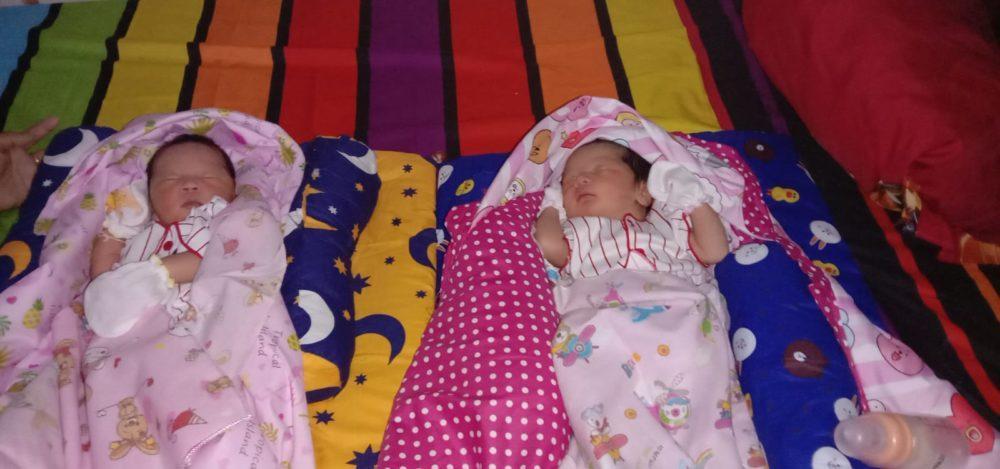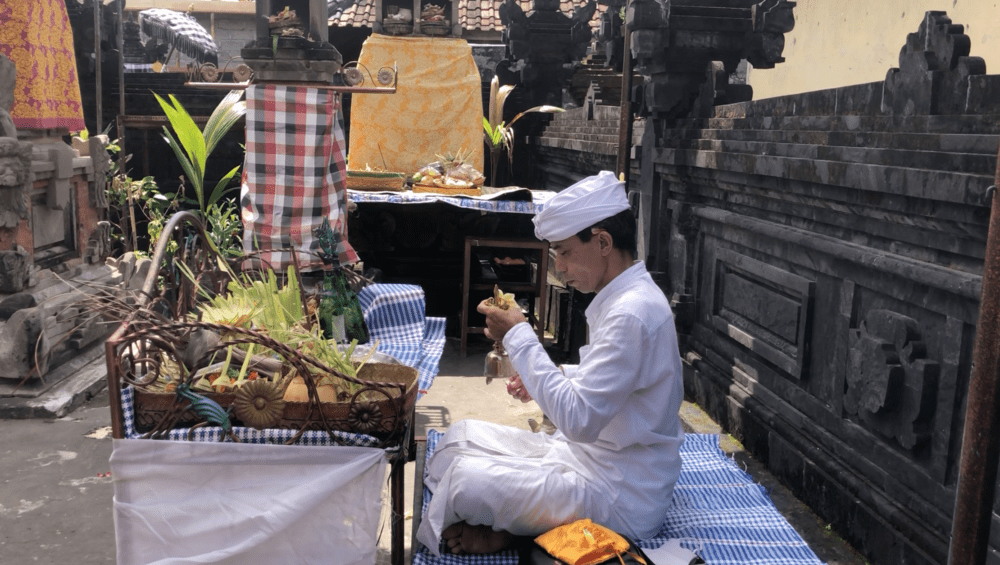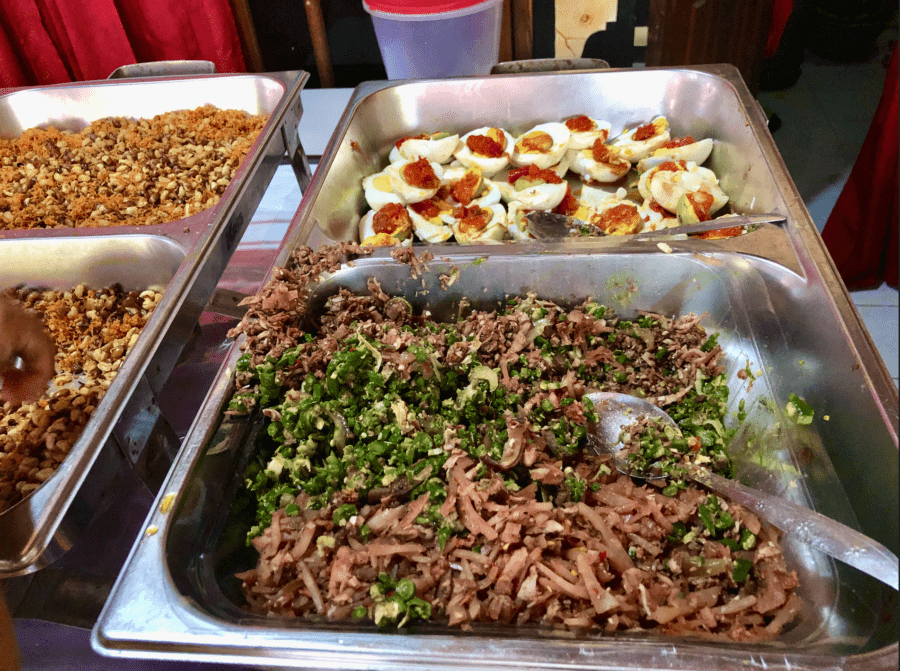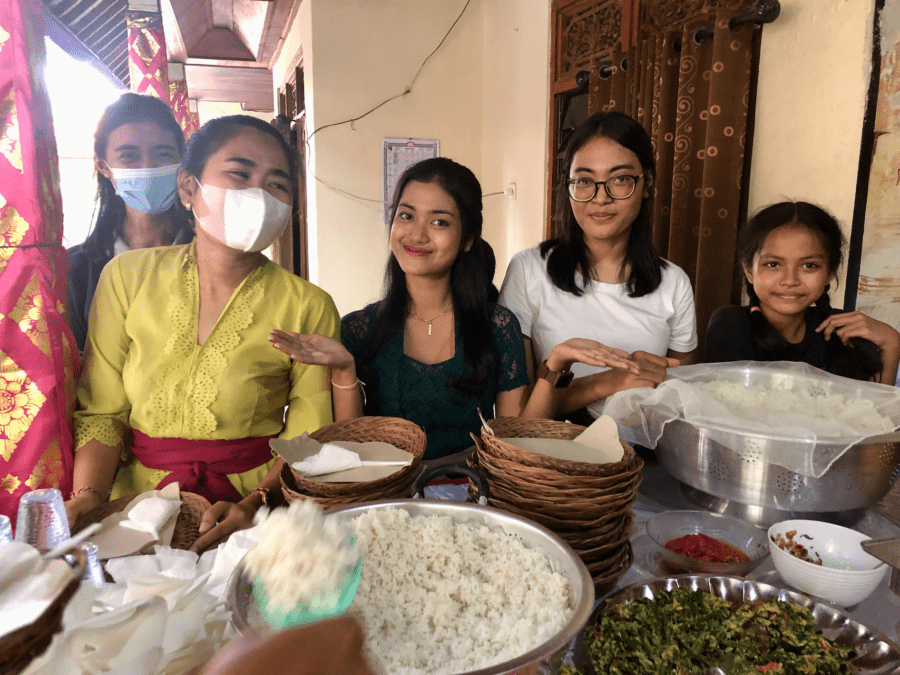 In Bali, everything is sacred. It is especially important to honor important events and stages in life – from birth to death – with ceremony. Each stage is recognized by the family and community. From the time of conception, a person’s progress is encouraged, blessed, and celebrated in the temple with priests and offerings, including conception, birth, maturity, marriage, and death. A newborn baby will go through eight ceremonies in order to be integrated into the Hindu community.
In Bali, everything is sacred. It is especially important to honor important events and stages in life – from birth to death – with ceremony. Each stage is recognized by the family and community. From the time of conception, a person’s progress is encouraged, blessed, and celebrated in the temple with priests and offerings, including conception, birth, maturity, marriage, and death. A newborn baby will go through eight ceremonies in order to be integrated into the Hindu community.
Bali family traditions originate from Indian ceremonies, and have been modified to include local shamanic practices. Hinduism came to Indonesia around the 2nd century CE with Indian traders, and it peaked in the 14th century CE with the great Majapahit kingdom. The Majapahit court dissolved in 1527 when Hindu loyals migrated to Bali, which is now the only Hindu island in Indonesia.
Important ceremonies take place in the family temple. Here we invite and to thank the gods with family, friends, and community. There are many types of temples with specific purposes, from daily prayers to periodic calendar events. This family temple is shared with the extended relatives, with everyone living close around it.
This 42-day ceremony cleanses the baby’s soul and body from all stains and defilements. Video by my friend,: Agus Suarjana Putra
1. Gedong-Gedongan, Pregnancy
When a woman learns that she is pregnant, a megedong gedongan (garbadhana samskara) ceremony is performed. This can take place immediately, or 210 days (seven months) – from conception. In the eighth month of pregnancy, the anticipating parents visit a river. Small fish are ritually placed on the mother’s abdomen with their heads facing downward. They should show the baby the way out of the mother’s womb, in an easy birth.
2. The Birth Ceremony
Immediately at birth, the focus is the placenta, which is still alive and regarded as a sibling or an ancestor that assisted in the growth of the unborn child in the womb. The placenta remains in place for a week or more, often until it falls off. Then the placenta is placed in a sacred container and buried in the earth.

Offerings and flowers are made for the child’s future. A white cotton cloth with powerful symbols is placed on the earth asking for the gods’ protection. During this time, the mother is considered sebel (impure) and thus must rest and stay within her home. She cannot go out, even to the temple to pray, while others will attend to her daily needs. For three days after the birth, the parents, are not allowed to enter the kitchen.
After the birth, other major ceremonies may be performed three days, twelve days, and forty-two days later. The village holy wise ones sometimes bless and name the baby. Major cleanings of the kitchen, family temple, and compound are performed. Sometimes valuable gifts are given.
3 days after the birth is a purification ritual.
The parents are given permission to enter the kitchen again.
Rorasin – 12 days after the birth
When the umbilical cord falls off, it is then cared for in the family temple in a shrine to Kumara, the guardian of all newborns.

42 Days Ceremony is the most important! Tutug Kambuhan
The ceremony we were invited to takes place 42 days after the birth. The entire community and priests are invited. At this time, babies can be given a name. This is the most festive and most important for the newborn and parents. Preparations went on for several weeks with decorations, snacks, and a meal. In this ceremony, the body and soul of the baby are cleansed of all stains, impurities, or influences of evil spirits. This important ceremony introduces the baby to Lord Brahma, and asks for blessing. It is a form of gratitude to ‘Nyama Bajang’ the ancestors that help take care of the baby in the womb, inviting them to return to their respective places of origin.

Cleansing is also done for the mother. This ceremony marks the day on which the mother is no longer considered impure or sebel, so that she can enter holy temples, and is permitted to prepare traditional Canang Sari offerings.
This ceremony serves as a protection and to encourage the baby’s development. Rice grains are placed on the center of the forehead, third eye, the seat of the human soul. The high priest cleans and blesses several baby chicken so that they can grow with the baby.

3 Month Ceremony
At 3 months of age, the newborn and its mother can leave the house. The baby may touch the ground for the first time. Before this time the baby is not allowed to touch the ground.
6 Month Odalan (Mundan) Ceremony.
At 6 months (210 days) after birth the Odalan ceremony is held. This celebrates the child’s first official birthday. This ceremony is repeated every 6 months, every 210 days according to the Balinese calendar, throughout one’s life.
Other Ceremonies
There may be other interim rites of passage to mark a child’s growth, depending on the tradition and the village. These may mark a child’s first teeth, falling out of the baby teeth, the beginning of studies, when the child reaches puberty, and of course, marriage.

Balinese Names
Most Hindu families have several children, so it’s a busy place keeping track of all these important dates and “life cycle ceremonies”, for your own children, and children of relatives, friends and neighbors!
Children’s names in Bali are usually given by their order of birth. They often have a second name, so other families in the village can figure out which person they’re talking about.
- Wayang or Putu means first born.
- Maday or Kadek is the second born.
- Komang or Nyoman means 3rd born.
- Ketut is the 4th born.
If there are more than four children, they start over at #1, adding the suffix Balik, which means (back to). So the 5th child can be “Wayang Balik, 6th is Maday Balik, and so on.
My name in Bali is “Ibu Maday”, which means 2nd born (girl). When I tell people this name, they giggle and right away treat me like family.
Thanks for reading!
Best wishes to you!
Srijana and Lama D.


